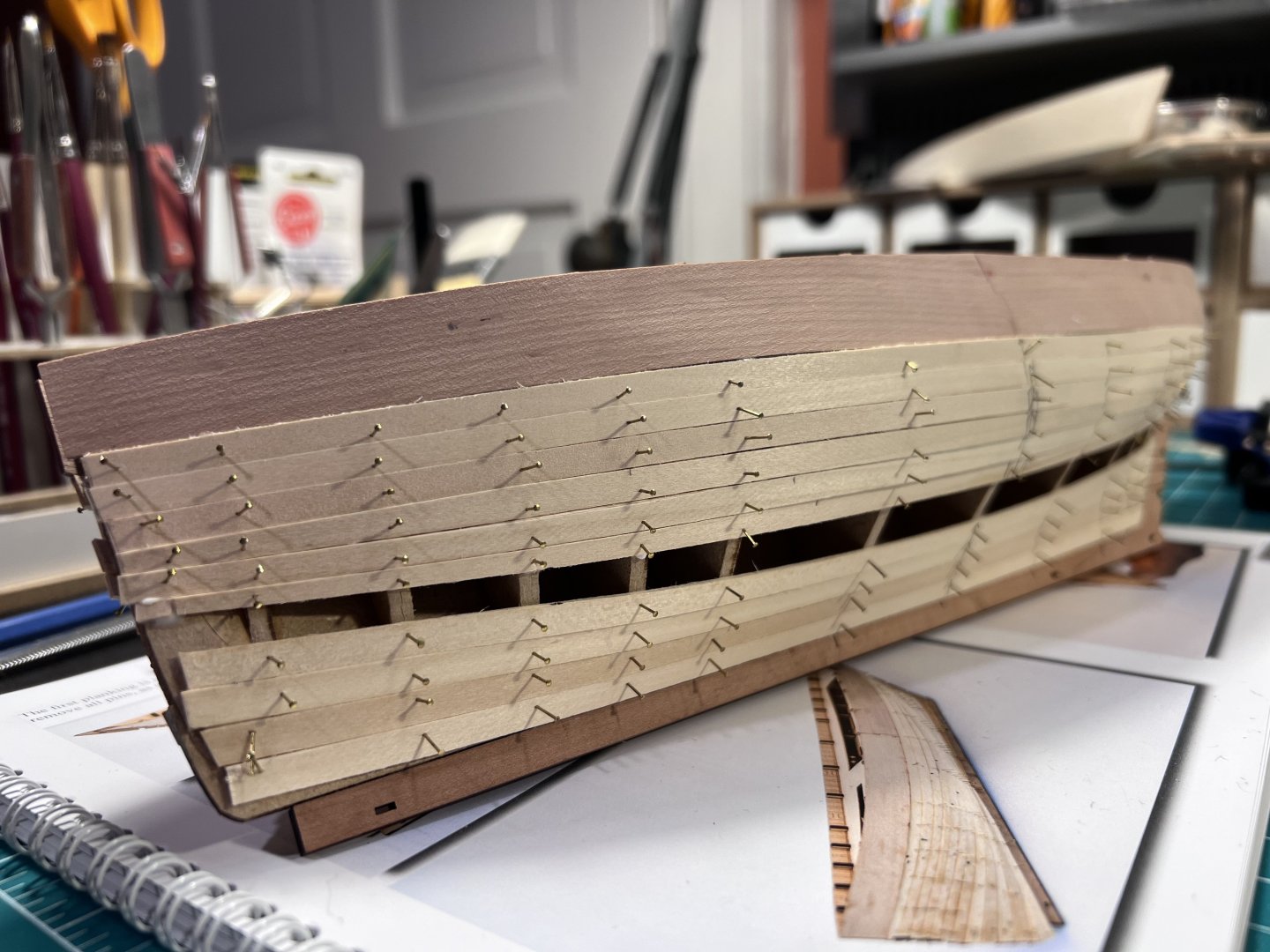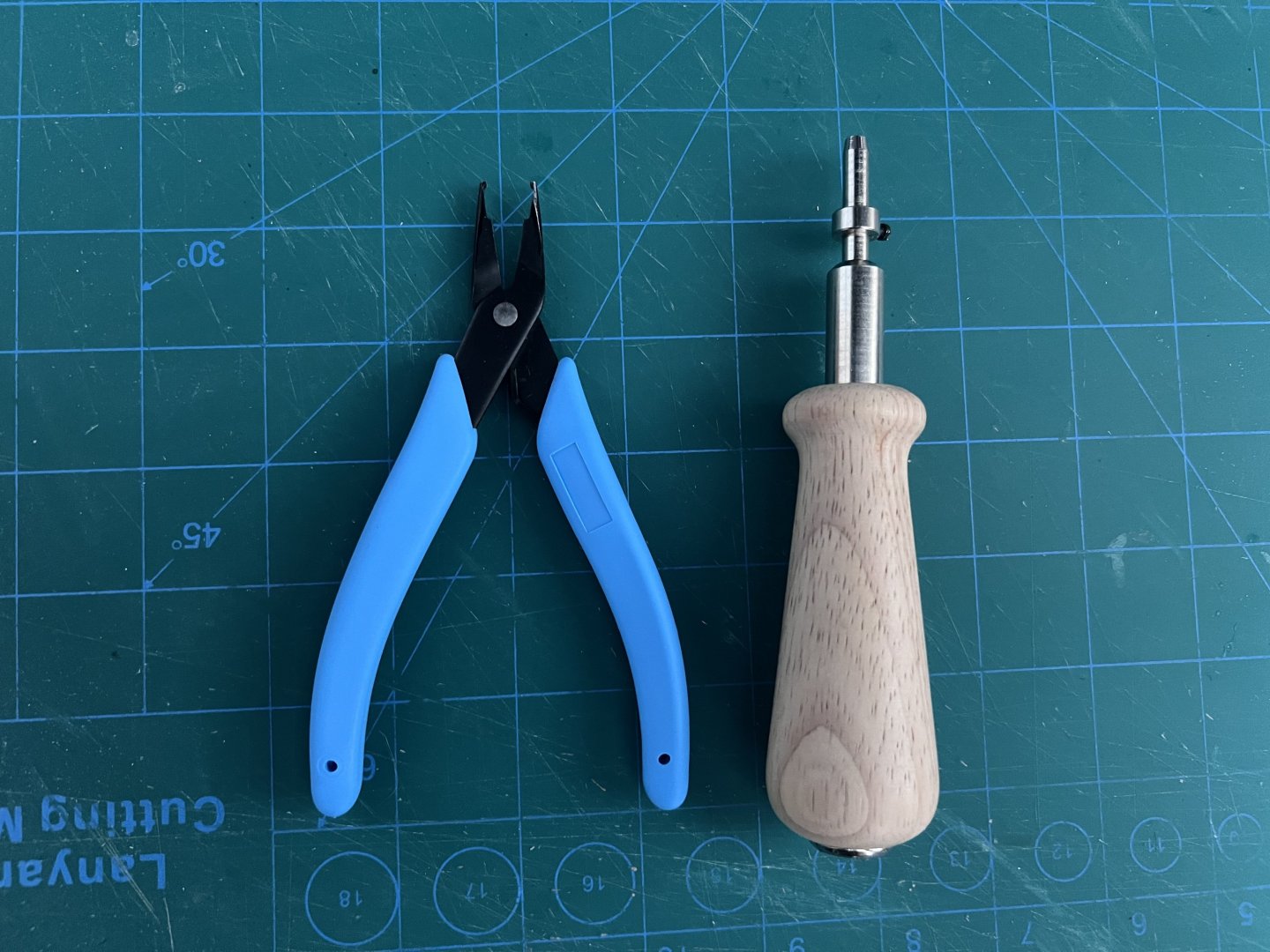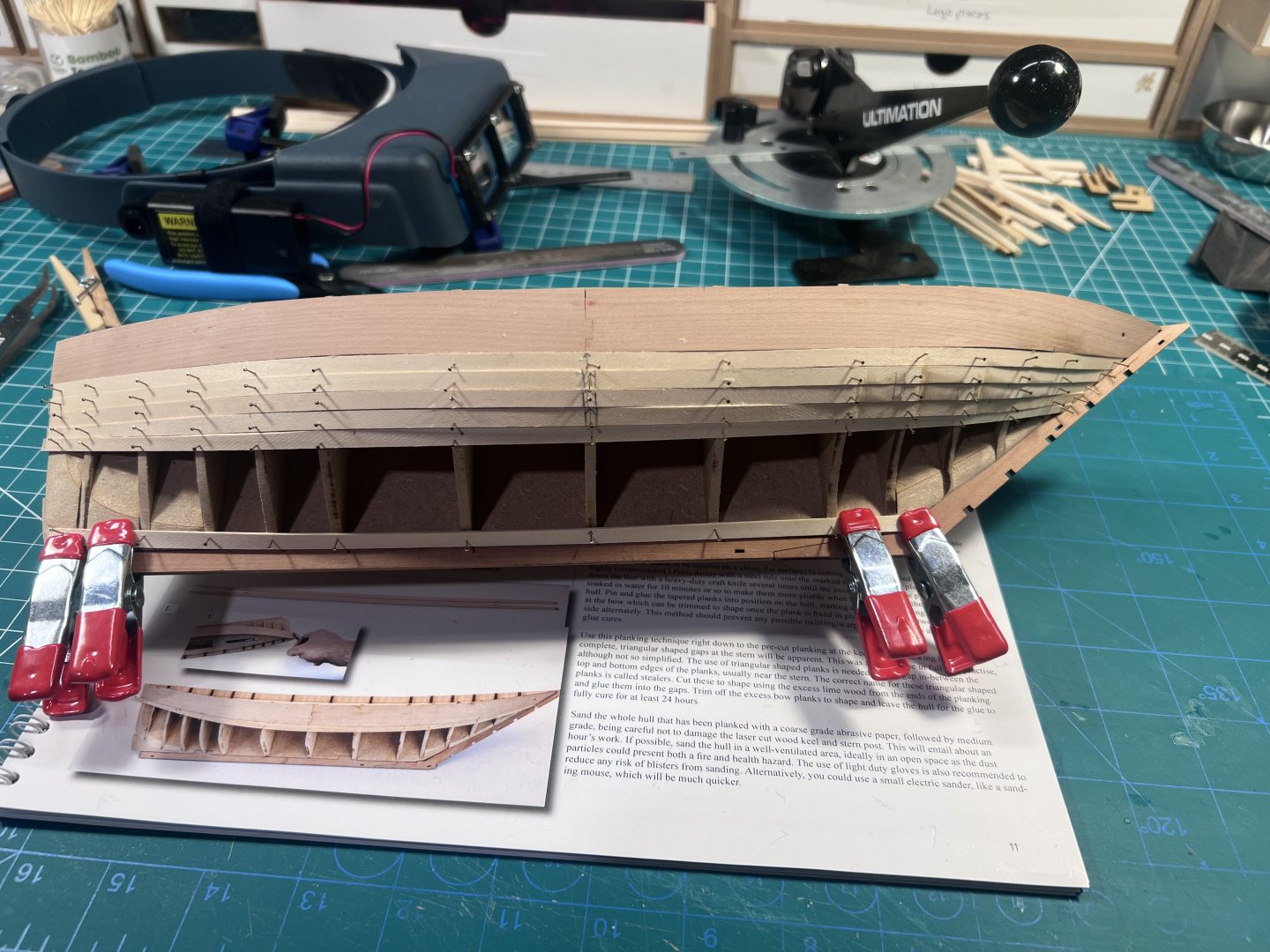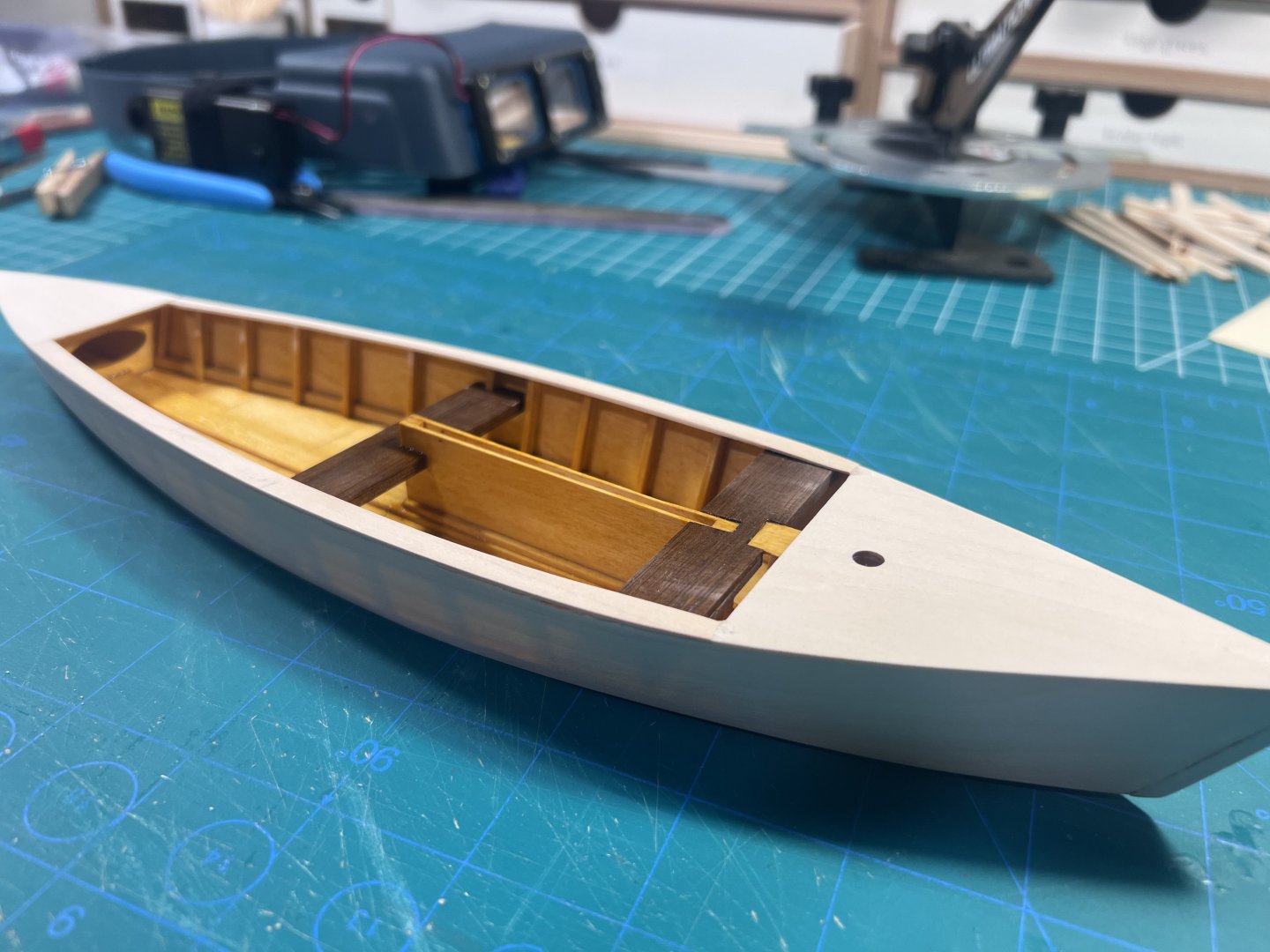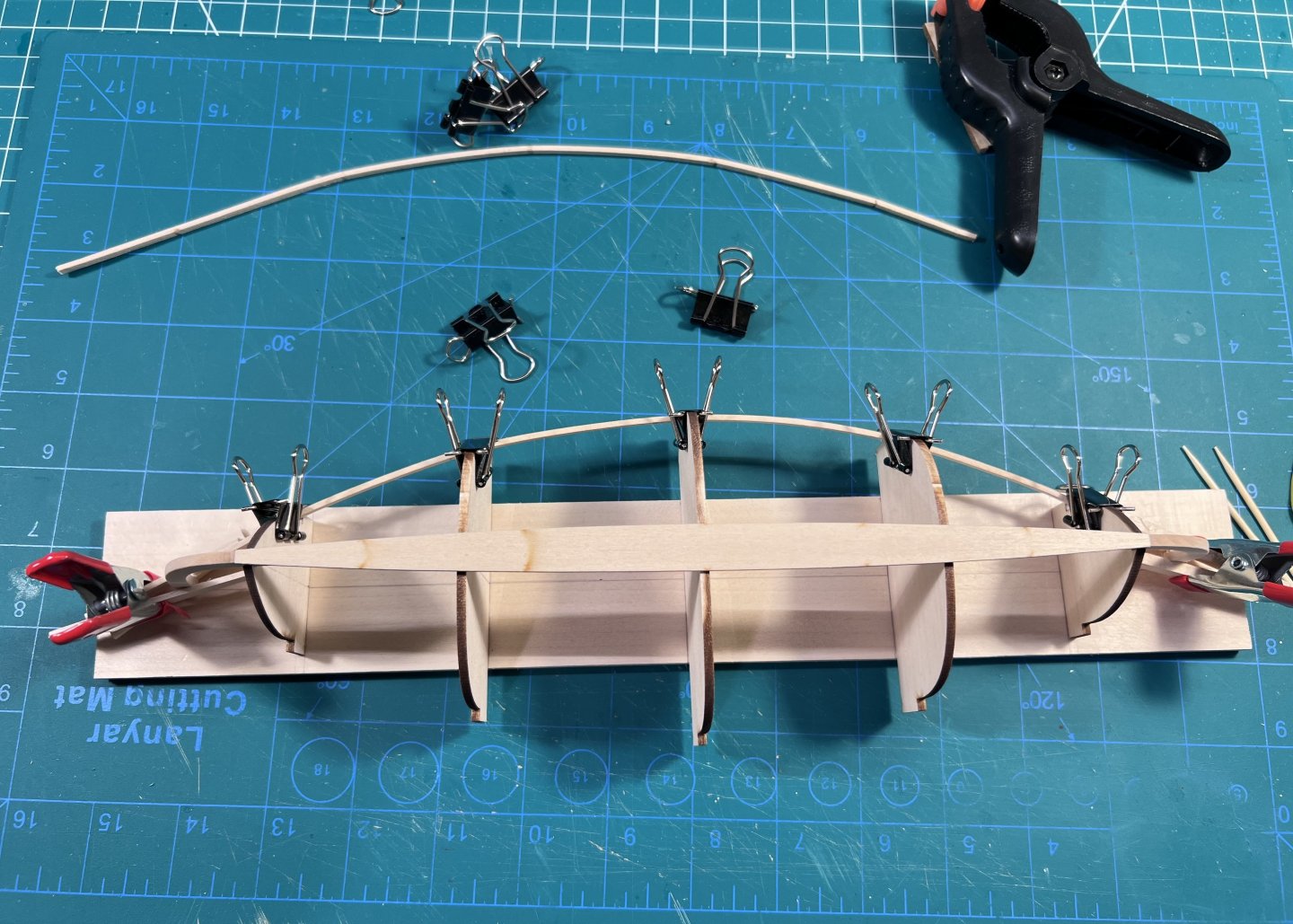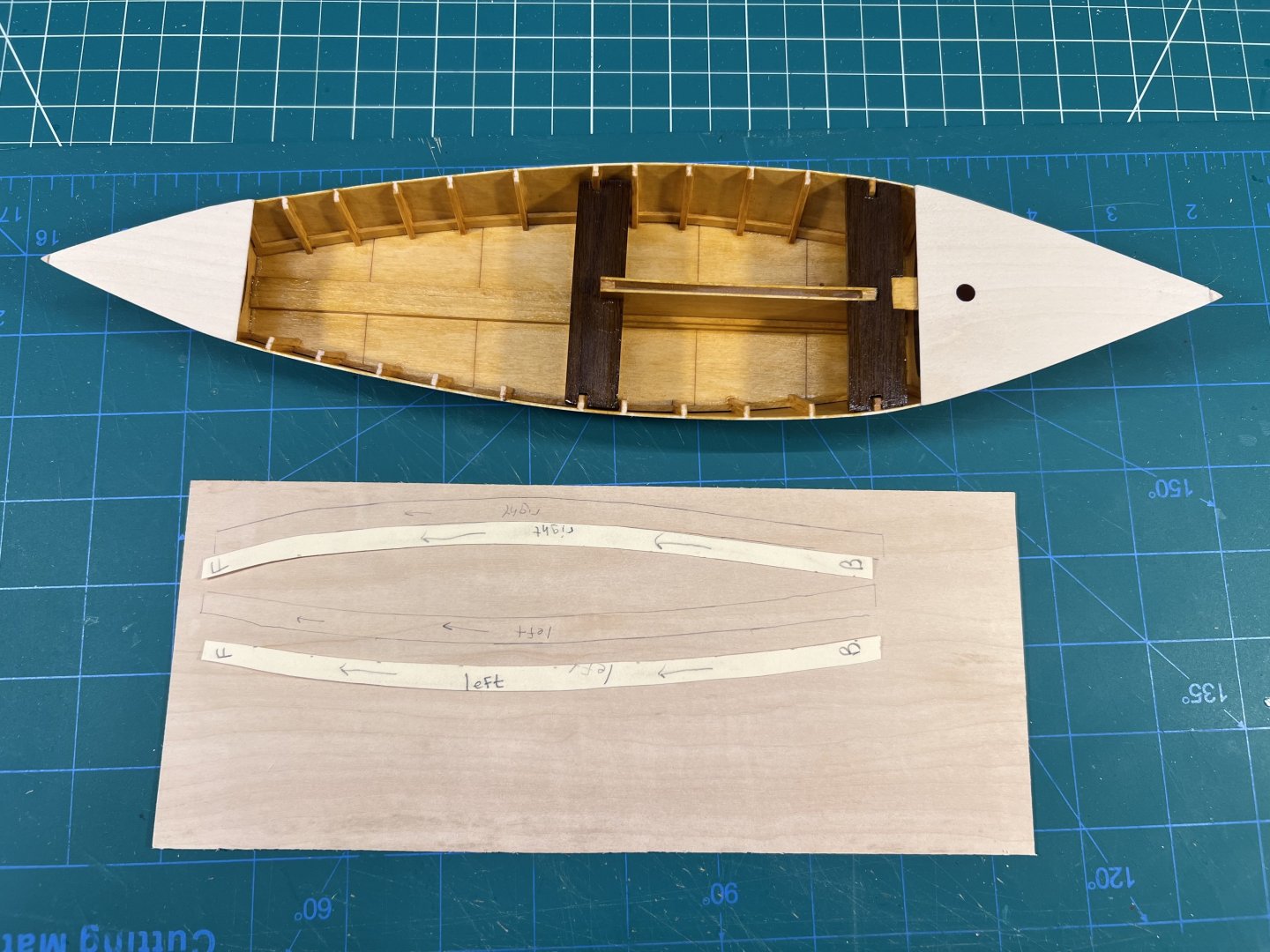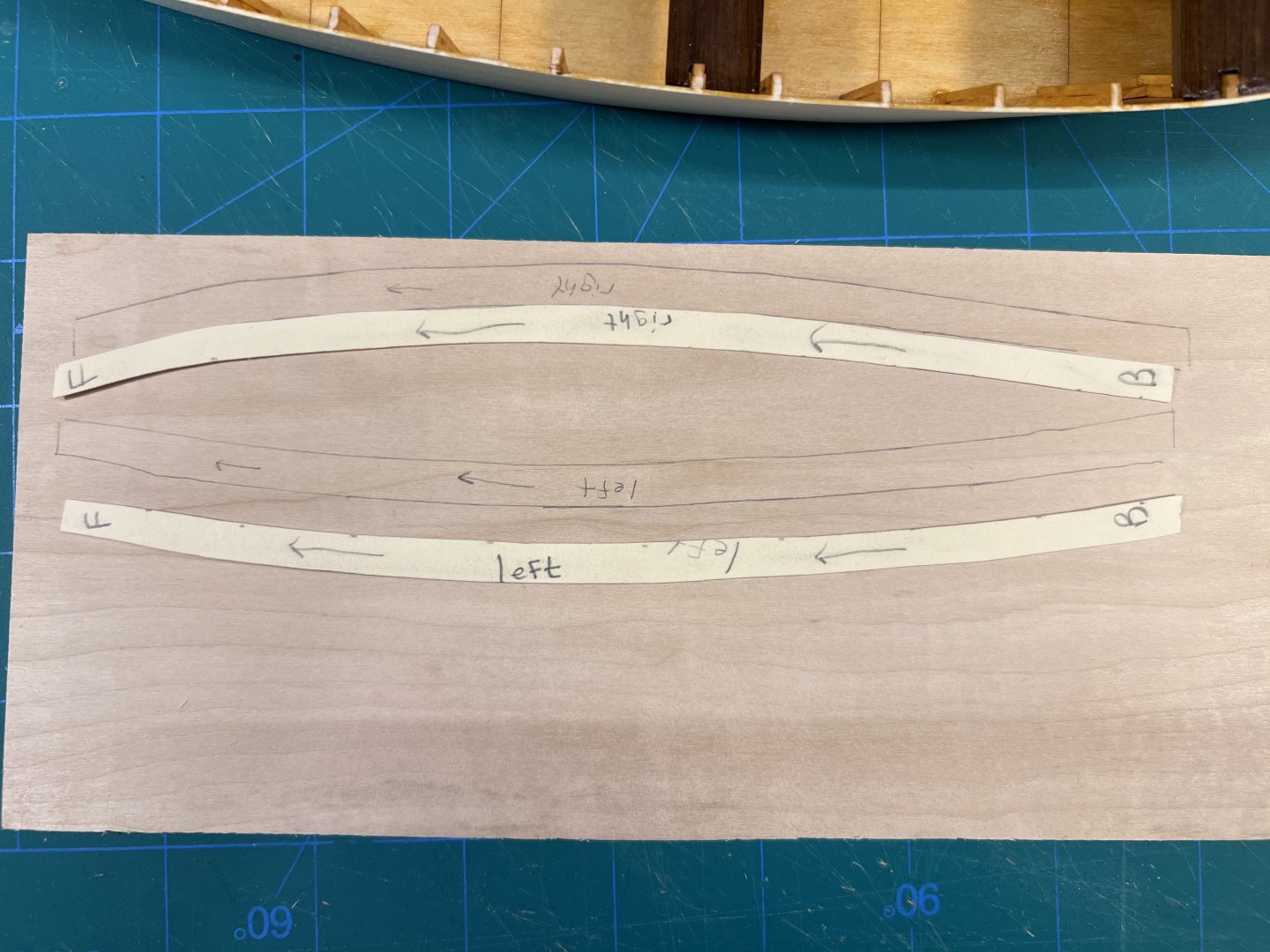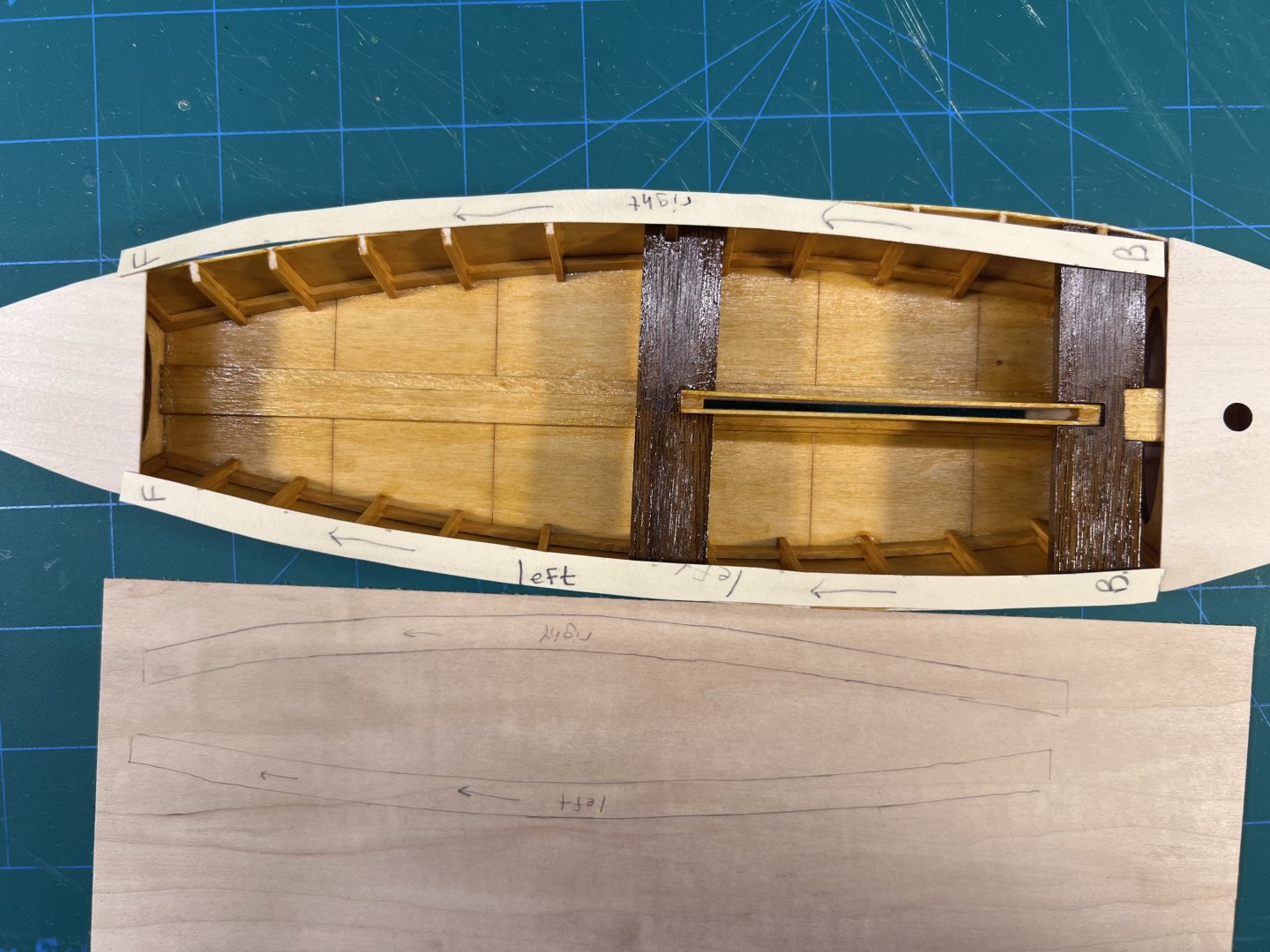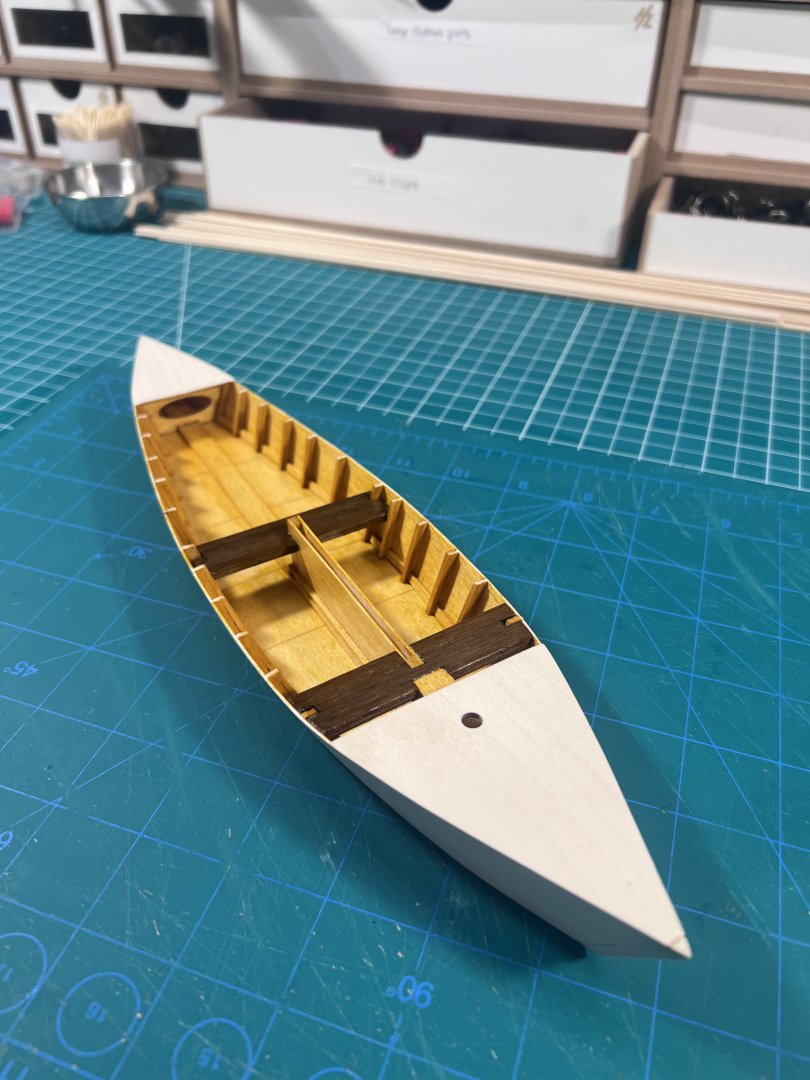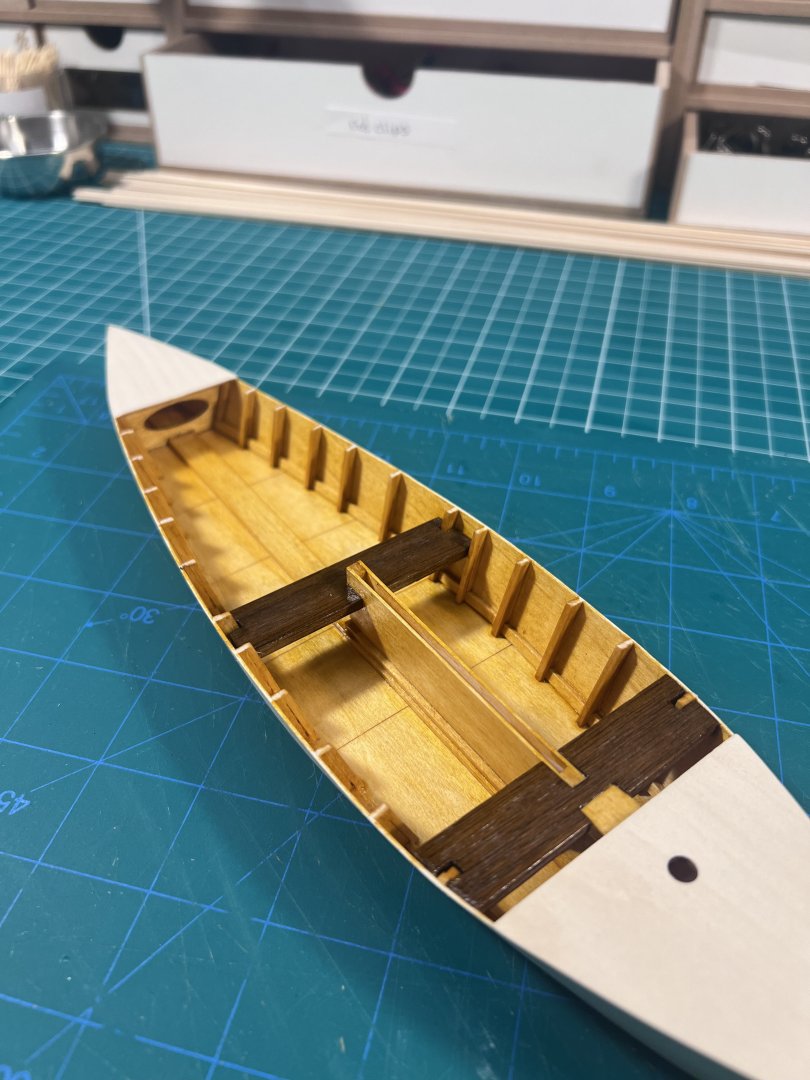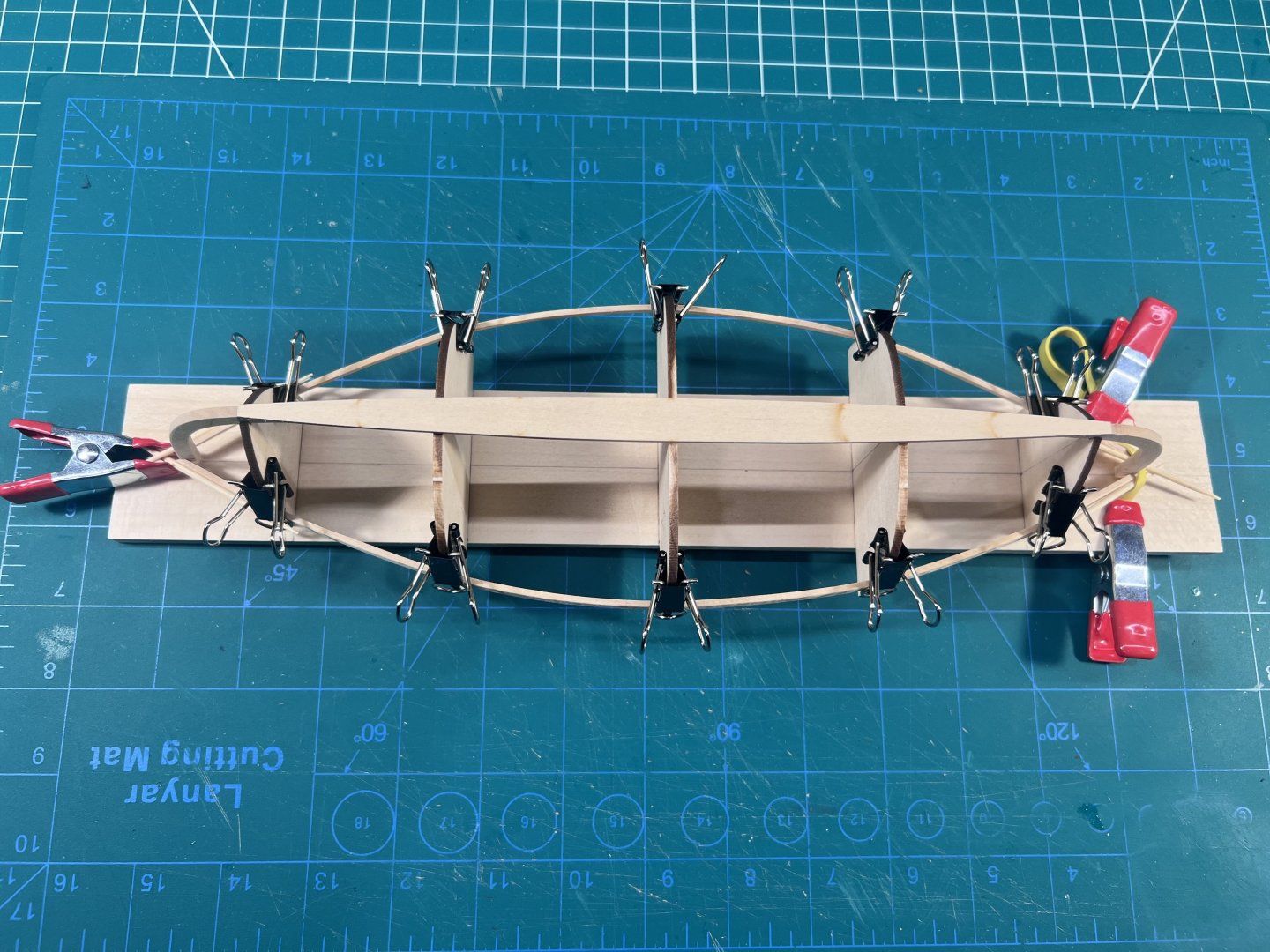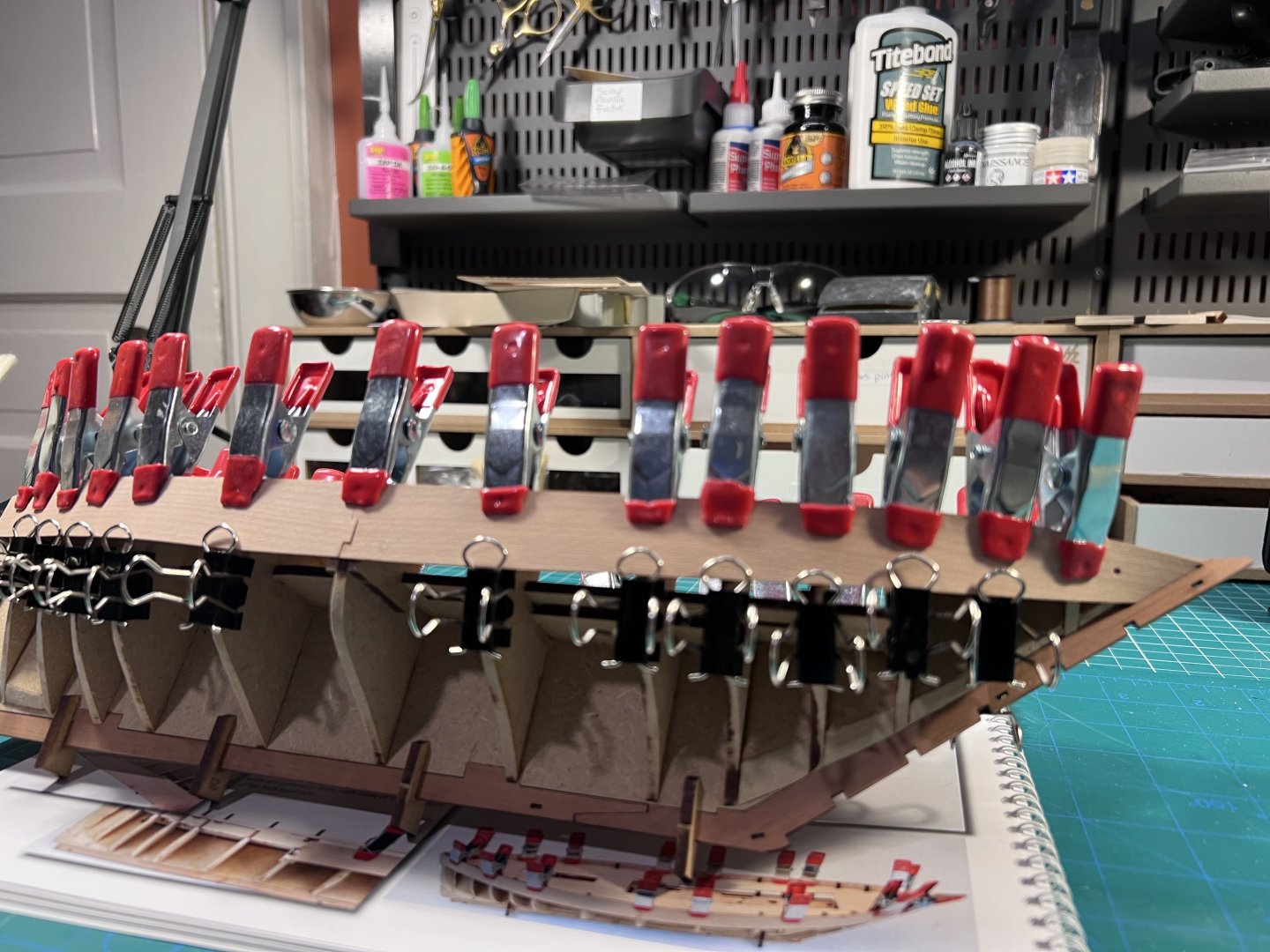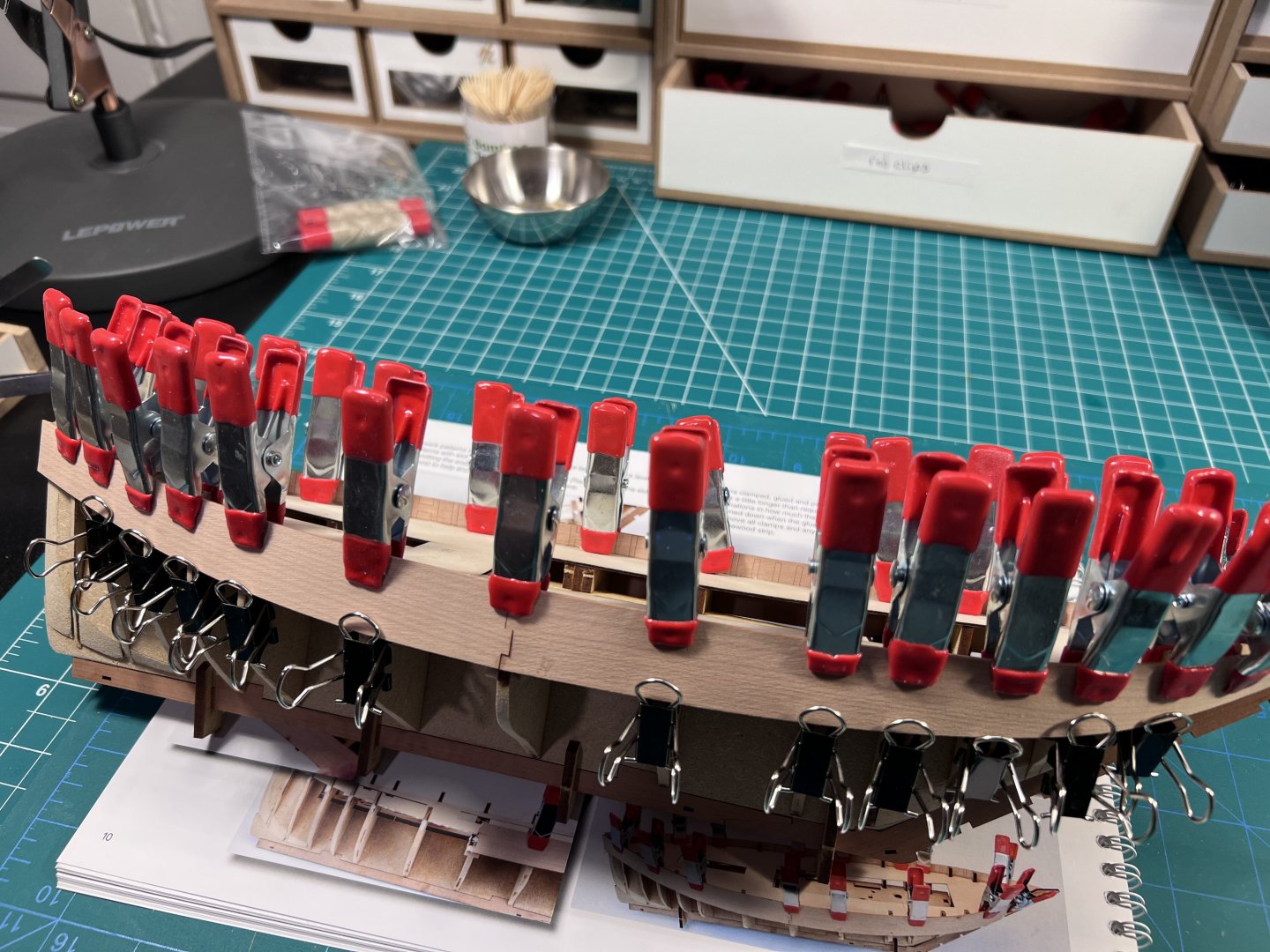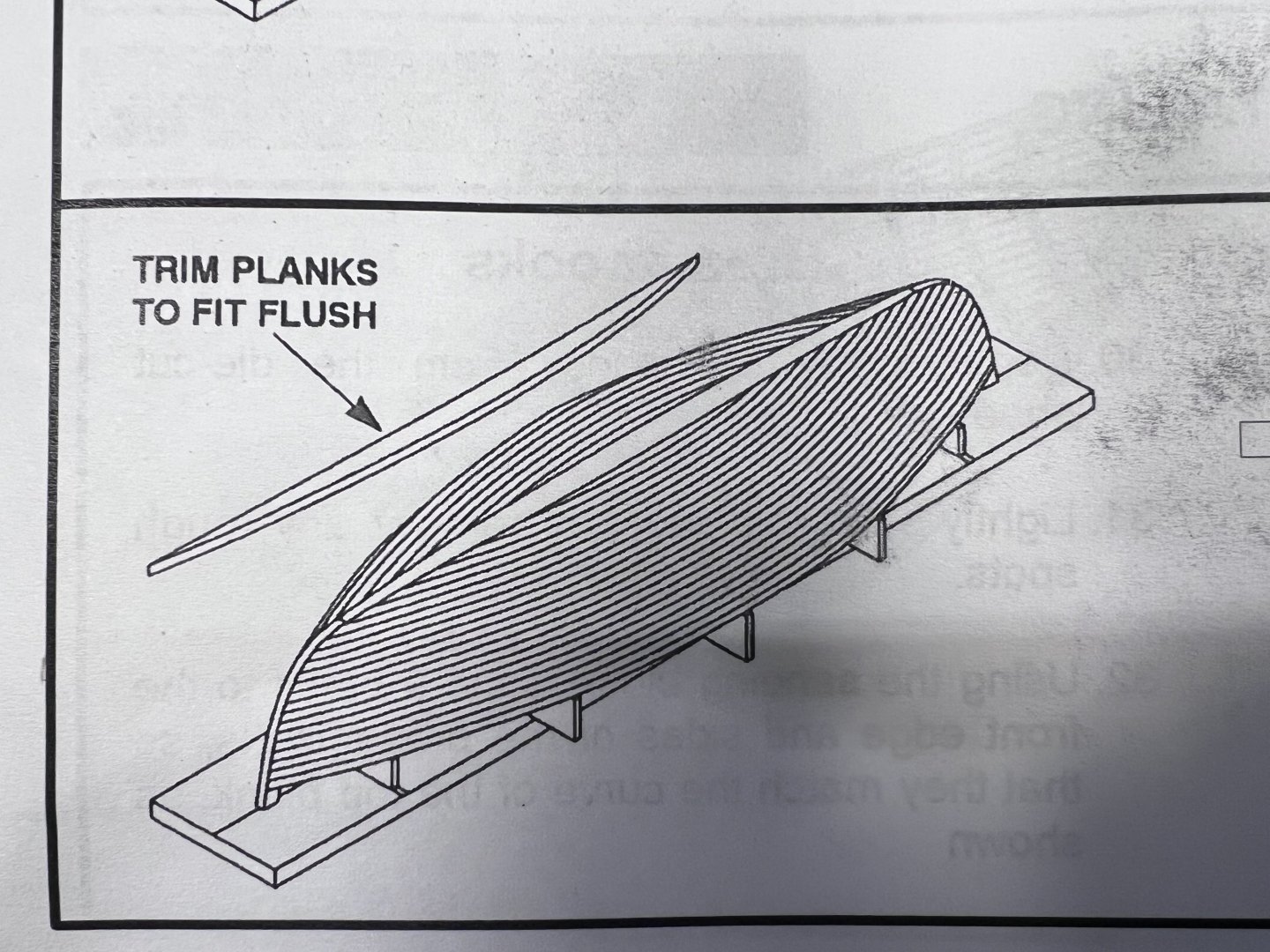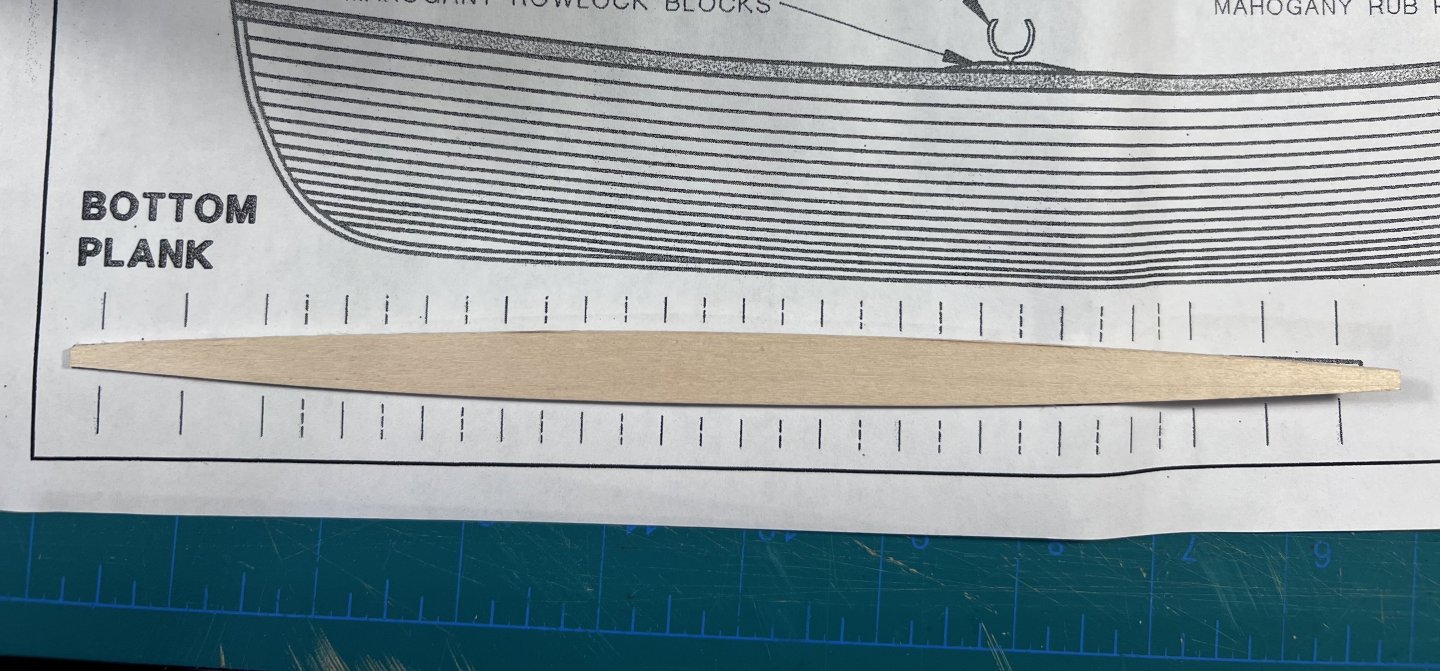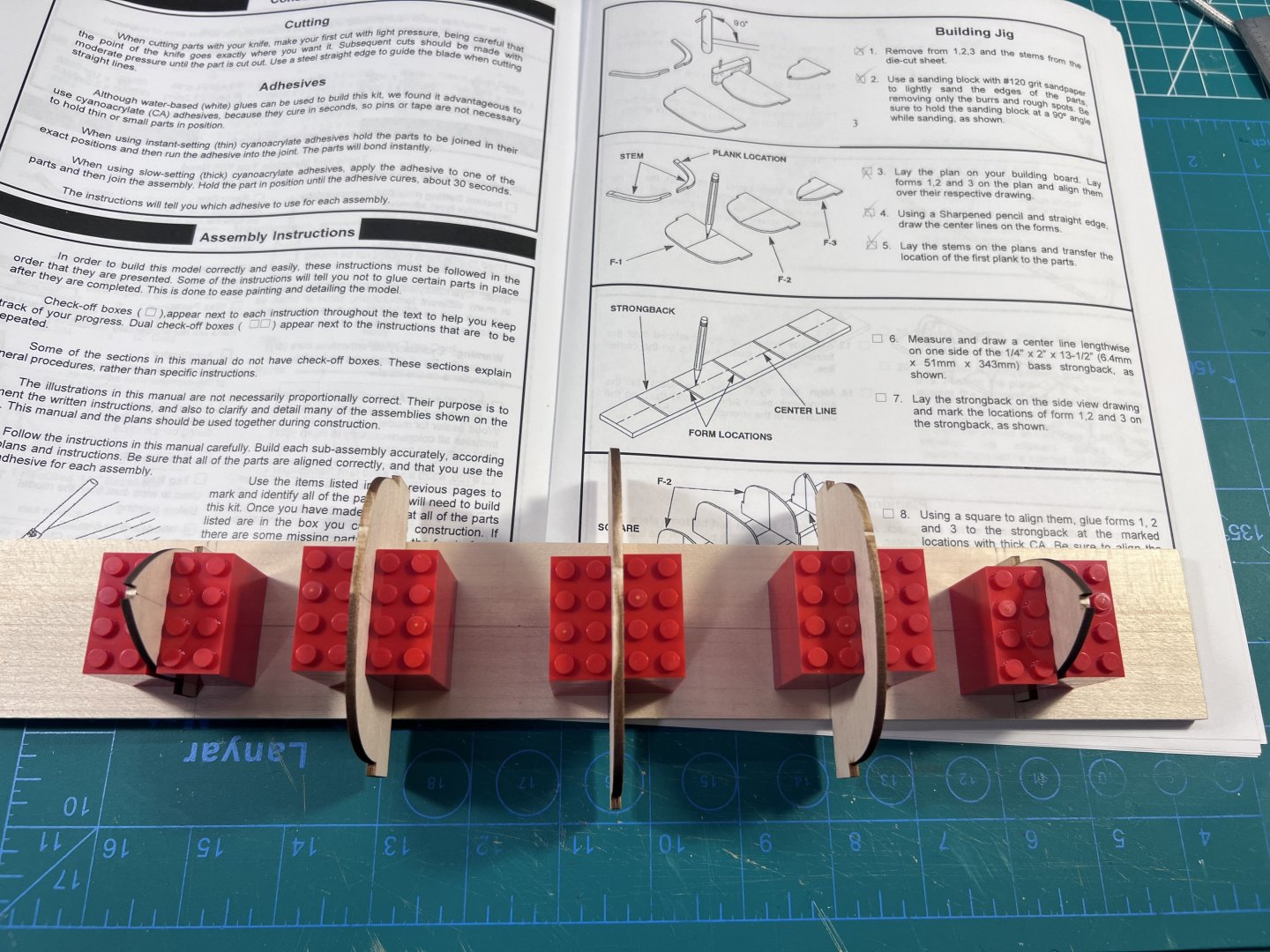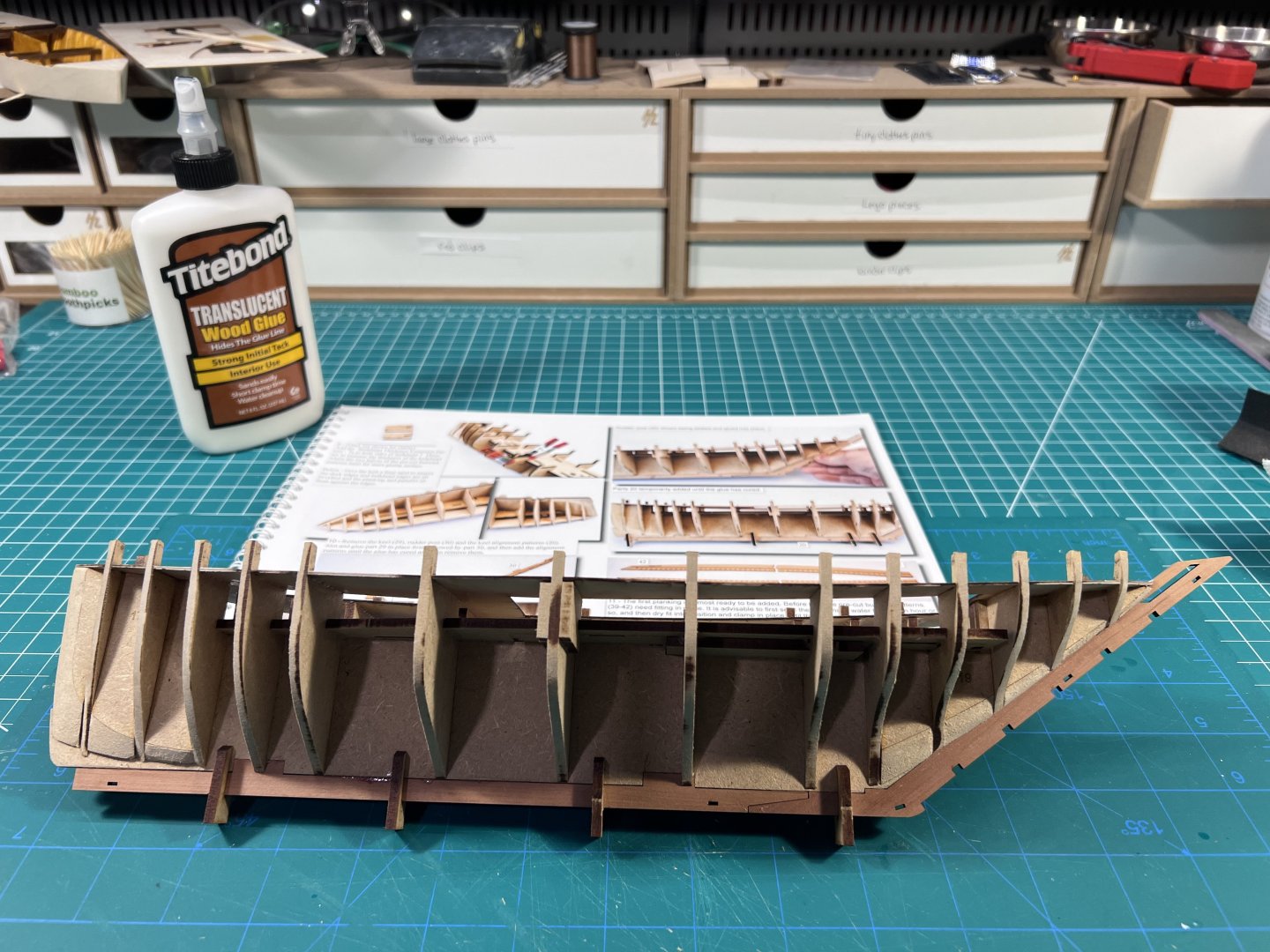
palmerit
NRG Member-
Posts
916 -
Joined
-
Last visited
Content Type
Profiles
Forums
Gallery
Events
Everything posted by palmerit
-
Lego blocks work great - they can be clamped or rubber banded down, or even glued. You can put a few dabs of glue - more and it’ll be a pain to free the build frames from the build board. Look ahead in the instructions to see how you free in later - it’s good in general to look ahead in the instructions. And definitely start by posting questions to your own build log.
- 20 replies
-
- Dory
- Lowell Grand Banks Dory
- (and 4 more)
-
- 20 replies
-
- Lady Isabella
- zulu
-
(and 1 more)
Tagged with:
-
One thing I have to say: the pin insertion pliers (from micro-mark) work infinitely better than the other style of pin pushers (I’ve tried two different kinds).
- 20 replies
-
- Lady Isabella
- zulu
-
(and 1 more)
Tagged with:
-
- 20 replies
-
- Lady Isabella
- zulu
-
(and 1 more)
Tagged with:
-
- 18 replies
-
- crabbing skiff
- Chesapeake Bay crabbing skiff
-
(and 1 more)
Tagged with:
-
I like using an airbrush. It takes some research on how to use it and how to thin the paints properly. You do have to disassemble and clean from time to time. No avoiding cleaning it, sometimes at the most inopportune times. For example, on the Vanguard models there are a lot of finely etched pieces showing detail. The airbrushing keeps all those etchings clearly visible. I'm certain you could get the same with properly thinned paints, nice brushes, and good technique, and I've seen people do that here. I like an airbrush because it is quicker, though the price of an airbrush and compressor and all the accessories is a lot more expensive than some nice brushes. Having quality paints is important whether using brushes or an airbrush. In fact, an airbrush really needs airbrush paints (I use Vallejo Air) or a lot of experimentation to get non-airbrush paints to the right consistency. Even using Vallejo Air, I thin using a combo of stuff. A recommendation depends in part on how much you want to spend. Assuming you want to get an airbrush, I'd check out some of the various YouTube videos - there are a lot - doing comparisons and ratings at different price points. I have an Iwata Eclipse airbrush (not the most expensive certainly, but not cheap). I've seen people recommend Badger, but have not tried them. I imagine a cheap no name airbrush might be a pain. Air brushes are fairly precise finely-engineered pieces of technology. Cheap knockoffs might not be worth it. Again, just basing that on things I've seen on videos, not personal experience. My Iwata is great, and it's one of the top ones recommended, but maybe overkill. To the point made by @ccoyle, there is such a big difference imho between the paint in a Model Shipways model and Vallejo paints. The former thick and fairly gritty, the latter pure liquid with no signs of the pigments. That said, I've seen people do a great job with Model Shipways paints with the right thinning and right technique. Some people love them. I used the Model Shipways paints on some work boats I built that were relatively large scale and the bit of blotchiness in those paints were okay given the context. The same blotchy grainy paints on a 1:64 model would look terrible I'd think, not that I've tried. I have a No Name compressor. Literally the brand is No Name. Got it from https://spraygunner.com/. No Name could well be their house brand. Saw it recommended someplace and it had a good sale. Again, there are lots of them that are cheaper than the one I got. I also got an airbrush booth so I could paint inside the house (our cellar is dank, we don't have a garage): https://www.amazon.com/dp/B07MGGYH2W?ref_=ppx_hzsearch_conn_dt_b_fed_asin_title_2&th=1 Not necessary, but nice to have depending on your setup. There are lots like this. I saw a review of this one. It works fine. An airbrush is great. But it is definitely an expense. And it takes a bit of practice and researching to figure out how to use it - and clean it. Short of it is that you don't NEED an airbrush. I bought one in part because I wanted to play with one and with our boys out of the house had a bit more disposable income than I had a few years ago to have fun.
-
Gluing one side (after letting the wet planks dry into place). I might try to do two sides at a time one I get the first planks glued in place. Couldn’t do both in the first pass.
- 12 replies
-
- maine peapod
- midwest products
-
(and 1 more)
Tagged with:
-
On your first post, you can edit it and add "tags" such as "muscongus bay lobster smack" and "midwest products" since they help people in the future working on this model find your build log. I use that feature all the time when working on a model to quickly pull up other logs when I hit a snag. There is also a "model shipways" version of the smack (I built that one). It's similar - and the end result looks similar - but it is a different model. If you poke around on other build logs just make not if you're looking at the midwest for model shipways versions. Someone else might also suggest (or even just edit) your post to add "- First Build" on the end of your title. I think some people are sometimes more likely to pop in when they see a "- First Build" in the title of a log to see if they can chime in, even if they have not built that particular model themselves.
-
Did you see that Olha Batchvarov did a build of this on her YouTube channel? It's recordings of a live build (she does on Sat and Sun mornings). I think she finished this one back in April or May, it started last January. It's step by step, with each recording for about two hours, and she tries to go beyond to make a really nice version of the model. I've learned a lot watching (also listening) to her video series:
-
Something I've been learning (slowly) is that there are really no shortcuts to planking and having it look great (even if you get more efficient at doing it). In reading build logs and seeing videos, you get a real sense of how long it takes to do it right, which includes not being afraid to do something over. Better to eliminate the small gaps by redoing (or avoiding them, being patient, measuring, adjusting, measuring, adjusting) than to assume you'll just fill them with wood filler later.
-
Sometimes - in my very limited experience - gaps only pop visually after a first coat of primer (I think some of the Vanguard instructions actually note that too, if not in the Sherbourne, then in the Ranger instructions). I'd try to fill and sand large gaps. I could be wrong, but the goal isn't to make it seem like a smooth fiberglass hull, because it's fine for some of the details of planking to show through the paint, but you also don't want large gaps - as you said. If you look at photos of real painted wooden ships, you can see the planking, but you don't see gaps or holes for obvious reasons. If you use some really watered-down filler, it can get into some of the tiny pinholes you have, which would be the things I'd be most inclined to want to fill. I first tried using a Minwax wood filler and it was way too grainy when watered down. Maybe fine for large-scale, but terrible for small scale. I found the Elmer's (water-based) wood glue to have a finer grain and it waters down a lot better. Would be interested to hear if other have different recommendations. You can apply it, let it get into the tiny holes and gaps, and just gently wipe the surface. (You can also get yourself into a death spiral of adding filler, sanding, adding filler, sanding. Don't ask how I know.)
- 51 replies
-
- First build
- Cutter
-
(and 2 more)
Tagged with:
-
I’m planning to add a tiny strip of decking over side supports. I couldn’t find an exact match online or in Chapelle’s book, but some others kind of in this class had thin decking along the sides. We’ll see if I can get looking good enough to install.
- 18 replies
-
- crabbing skiff
- Chesapeake Bay crabbing skiff
-
(and 1 more)
Tagged with:
-
I used an amber shellac on the interior. Not yet sure how I’ll paint it later. I ended up adding some extra supports in the open slots between the thwarts. The middle one is not aligned sadly. I also added some trim pieces at the ends.
- 18 replies
-
- crabbing skiff
- Chesapeake Bay crabbing skiff
-
(and 1 more)
Tagged with:
-
This is probably going to be a plank a day kind of model. That’s fine since I’m doing this one as filler while waiting for parts of other models to dry. I soaked the planks in hot water. I’ll leave them to bend overnight. After I get this first plank glued into place I might soak and bend a few planks on each side. I’m going to have to figure out better ways of clamping the ends in place - a problem I haven’t solved satisfactorily with other models.
- 12 replies
-
- maine peapod
- midwest products
-
(and 1 more)
Tagged with:
-
@Russ MIlland Figuring out how to do the narrow planking is definitely challenging. Thankfully there are other build logs out there. I got it because I thought it would be a different challenge for me. While a small boat and a small model, this is definitely not a 1st or 2nd or 3rd model to build. I’m going to find it challenging to plank. If this were my first model, I'd be at a complete loss about how to build it. It's like 5 levels harder than the Model Shipways Dory or Midwest Models Dory for example. And still way harder than planking the Vanguard Sherbourne (or Ranger). Again, that's not a surprise. I kind of got it because I thought it would be a different challenge. Just didn't appreciate how challenging it would be. It's a bit of a puzzle.
- 12 replies
-
- maine peapod
- midwest products
-
(and 1 more)
Tagged with:
-
Great planking job. Not "for a first model". Just great planking job. I'm going to make myself feel better and say that you learned from our (my) mistakes on our first (second, third, ...) attempts.
- 51 replies
-
- First build
- Cutter
-
(and 2 more)
Tagged with:
-
I shaped the bulwarks to the hull overnight (having soaked them in hot water for maybe 15min). Now they’re glued and clamped in place and I’ll let them dry overnight. Like the instructions say, you don’t add glue to the top tabs where the red clips are secured because those tabs will be removed later.
- 20 replies
-
- Lady Isabella
- zulu
-
(and 1 more)
Tagged with:
-
I’m curious what you bought if you’re willing to share.
-
Not that I need any more models for my stash, but who sells these? I know Amazon has some - and I would trust buying them from Amazon Japan - but unless I know the reseller on Amazon, I generally avoid, especially for something as expensive as a model kit. Specifically, is there a reseller in the US? The first site that shows up in a google search for me (in Japan) is https://www.zootoyz.jp.
-
I’m betting the planking will be more fiddly than other models. The planks are pretty narrow and there are lots of them. But we’ll see.
- 12 replies
-
- maine peapod
- midwest products
-
(and 1 more)
Tagged with:
-
Marking rib locations and gluing the stems to the bottom plank. The bottom plank has the rib locations marked.
- 12 replies
-
- maine peapod
- midwest products
-
(and 1 more)
Tagged with:
-
Making the building jig on the building board. Need to glue the centered bulkheads to the board. Instructions say to use CA. I’m using wood glue. Though I used a speed set Titebond for this, with Lego blocks to keep things square.
- 12 replies
-
- maine peapod
- midwest products
-
(and 1 more)
Tagged with:
-
Adding a new small build to work on now and then between other builds. I'm waiting for shaped bulwarks to dry overnight on one model, shellac to dry overnight on another, and wood filler to dry overnight on another. I don't often get a few hours to work on models - and after a busy Saturday writing a challenging report for work - I need to turn my mind off. So I grabbed the Maine Peapod from the shelf that I had bought cheap during a Model Expo name-your-price sale. It's a small model, but after seeing some of the builds, it could be a tricky bit of planking. You might see from other fairly recent build logs that Midwest models were discontinued. They are slowly now being reissued by Model Expo / Model Shipways. From what I can gather, the instructions have barely been updated, except to include an updated map of the sheet parts at the front. The instructions refer to paints and techniques that seem decades old (paint brands that I think no longer exist, using Windex to bend planks which I've never seen in other contexts, using something like electrical tape instead of tamiya tape). The parts are I gather new laser cut patterns from the old model might have had. These models - even small, seemingly simple ones - are more of a challenge to build in many ways than more modern (larger, seemingly more complex) models you see from Vanguard.
- 12 replies
-
- maine peapod
- midwest products
-
(and 1 more)
Tagged with:
-
One thing I like about this boat is how weird it is - at least to me. The diagonal section is where the rudder attaches. I don’t think I’ve seen a boat with a 45 degree rudder like that. The 90 degree on the other end is the bow.
- 20 replies
-
- Lady Isabella
- zulu
-
(and 1 more)
Tagged with:
About us
Modelshipworld - Advancing Ship Modeling through Research
SSL Secured
Your security is important for us so this Website is SSL-Secured
NRG Mailing Address
Nautical Research Guild
237 South Lincoln Street
Westmont IL, 60559-1917
Model Ship World ® and the MSW logo are Registered Trademarks, and belong to the Nautical Research Guild (United States Patent and Trademark Office: No. 6,929,264 & No. 6,929,274, registered Dec. 20, 2022)
Helpful Links
About the NRG
If you enjoy building ship models that are historically accurate as well as beautiful, then The Nautical Research Guild (NRG) is just right for you.
The Guild is a non-profit educational organization whose mission is to “Advance Ship Modeling Through Research”. We provide support to our members in their efforts to raise the quality of their model ships.
The Nautical Research Guild has published our world-renowned quarterly magazine, The Nautical Research Journal, since 1955. The pages of the Journal are full of articles by accomplished ship modelers who show you how they create those exquisite details on their models, and by maritime historians who show you the correct details to build. The Journal is available in both print and digital editions. Go to the NRG web site (www.thenrg.org) to download a complimentary digital copy of the Journal. The NRG also publishes plan sets, books and compilations of back issues of the Journal and the former Ships in Scale and Model Ship Builder magazines.


